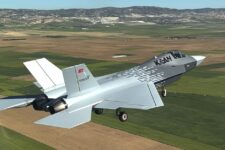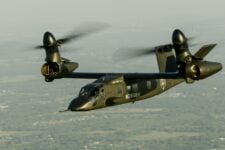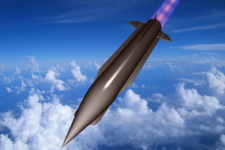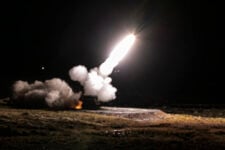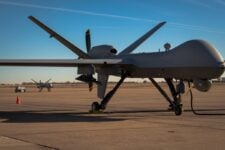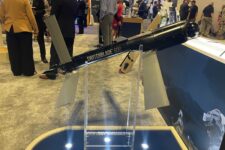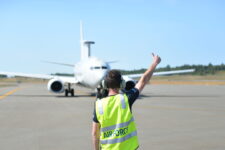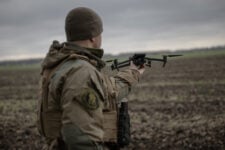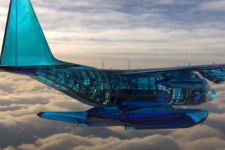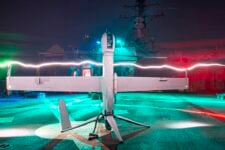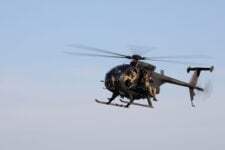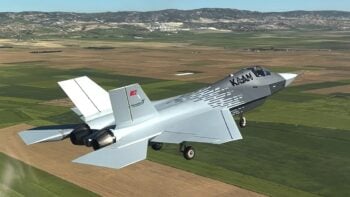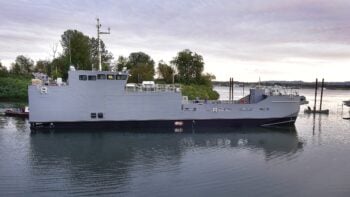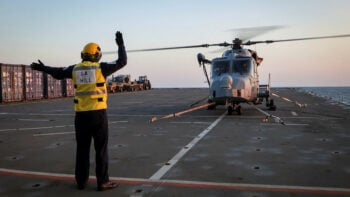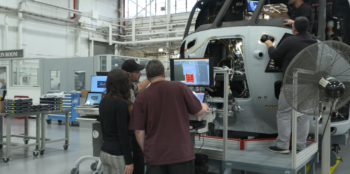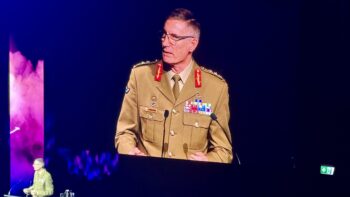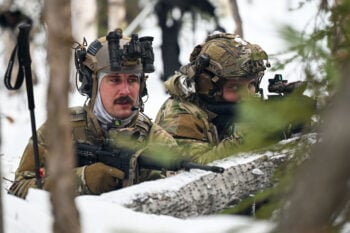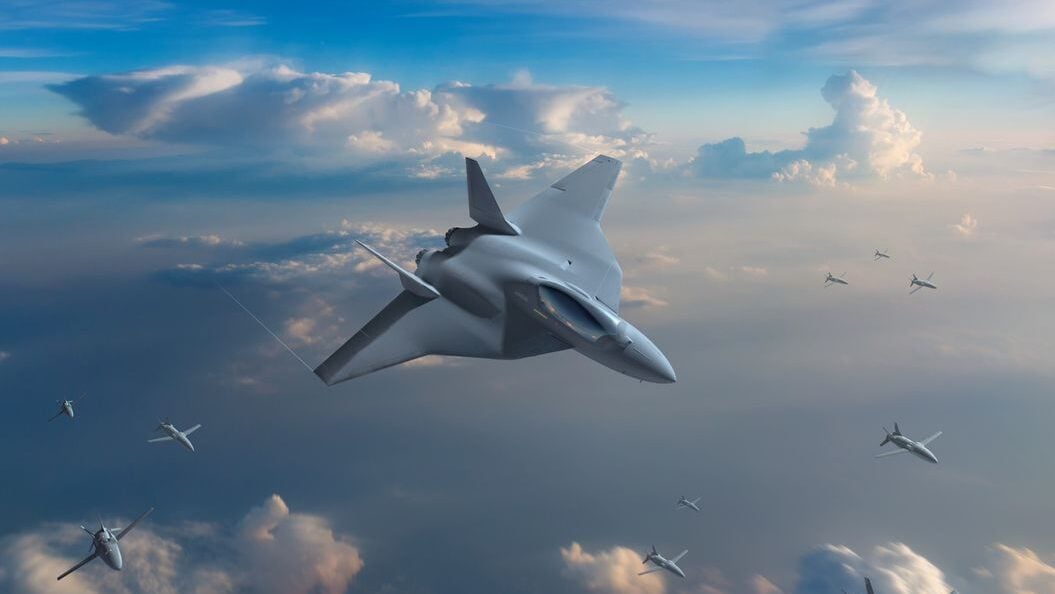
The European Future Combat Air System or SCAF revolves around development of a next generation fighter jet, remote carriers and a combat cloud.
PARIS and BELFAST — A leading French Air and Space Force official told reporters this week that the French-German-Spanish Future Combat Air System (FCAS) effort is weighing four different fighter designs, with a final choice coming first quarter 2025.
Major General Jean-Luc Moritz, who leads the French segment of the trilateral effort, also known by its French acronym SCAF, told reporters Thursday that he expects to downselect to two designs by June 2024 and have a final design in hand “by” March of 2025.
It’s a sign of progress for a program that has faced political headwinds almost from the start. The latest came from a British newspaper claiming on Nov. 1 that Germany could walk away from the effort altogether.
Moritz told reporters that he saw no signs that Germany is about to walk out of the program, saying “there is a good working atmosphere and the deliverables are being delivered.”
His counterparts on the SCAF steering committee are Major General José Antonio Gutiérrez Sevilla for Spain and Brigadier General Markus Schetilin for Germany, with whom Moritz says he has “a very good working relationship.”
RELATED: FCAS? SCAF? Tempest? Explaining Europe’s sixth-generation fighter efforts
Moritz stressed the importance of building out the NGWS (Next Generation Weapon System) to fulfill FCAS ambitions.
The NGWS involves the development of a New Generation Fighter (NGF), accompanied by remotely piloted aircraft, or wingman drones, called Remote Carriers that will connect to each other digitally using a combat “cloud.” The NGWS will be able to deploy autonomously or in a network with other airborne, naval, land or space-based combat or command systems.
The trilateral Implementation Agreement 3, signed by FCAS governments in August 2021, approved the NGWS element of work.
Since then, on behalf of France, Spain and Germany, France’s General Directorate for Armament (DGA) awarded the three main industry leads — Dassault, Airbus and Indra — and other key suppliers a €3.2 billion ($3.4 billion) contract to launch Phase 1B of FCAS in December 2022, greenlighting work to develop a flying next generation fighter demonstrator.
New FCAS Capabilities Outlined
The three nations continue to work on all three NGWS elements — the combat aircraft, remote carriers and the combat cloud.
“We need to develop these by trying to forecast the threats we are likely to face in the 2030 to 2040 timeframe. What will our adversaries be thinking? We need to maintain operational superiority via superior technology but our adversaries are also moving more quickly,” he remarked, adding that the Remote Carriers “must cost a fraction of the fighter because they will be the risk takers.”
Airborne superiority is a principle that will remain true into the future, Moritz said, “So I want a tool that can exchange quality, up-to-date data in real time, that will probably use quantum calculators instead of computers, I want to be able to maneuver from land, air or sea and I want to be faster, stronger and higher than my enemy.”
He said the three nations have agreed on a certain number of key capacities for the aircraft. These include stealth, maneuverability, the ability to saturate the enemy, and the combat cloud used at what he called the far edge, the edge and the core.
The far edge is the closest to the users (the heart of the battle) but the furthest from the cloud data centers. The edge would involve aircraft such as AWACS and be situated slightly closer to the cloud data centers. The core refers to operations far behind the line of combat and closest to the data centers.
The challenges developers face include the architecture of the combat cloud that “must be natively developed to be interoperable with aircraft from other NATO countries,” Moritz repeatedly stressed, using the example of mobile phones developed and manufactured by different companies but able to connect with each other thanks to the overarching Internet Protocol (IP). “And I’m quite optimistic that we’ll achieve this,” he said.
He said that the need for interoperability was “very real” because by 2030 European air forces will be operating almost 1,000 European-developed and manufactured aircraft (some 300 French Rafales, 450 English Typhoons and more than 200 Swedish Gripens) in addition to slightly less than 400 US-developed F-35s.
He also believes that artificial intelligence will be aboard the aircraft to help the pilot make operational and tactical decisions. “It won’t be there to help the pilot fly the aircraft because that will be unnecessary. The aircraft’s flight will be automatically controlled,” he explained.
He added that of the seven development “pillars” — aircraft, engine, remote carriers, combat cloud, simulation, sensors, and stealth — currently under development, the “most effervescent” for the time being is the combat cloud, “which we are all agreed will be a totally European development.”
He said that all countries agreed the aircraft and the remote carriers will have to be able to operate from aircraft carriers. What “remains a subject”, he conceded, is the exportability of the aircraft. France, for one, wants to be able to export the NGF.
Moritz also confirmed that Belgium will enter the program as an observer under an MOU by year end with the intention of becoming a full partner at some point in the future.
Regarding Sweden, he remarked that it would be at least two years before Sweden decided what it wanted for the future of its aviation. (Although at the recent International Fighter Conference in Madrid, Sweden indicated it would not decide until 2031.)
Moritz was also at pains to explain that the British-Italian-Japanese Global Combat Air Program (GCAP) formerly known as Tempest, is not comparable to the SCAF because it involves only the development of the next-generation combat aircraft. It is not a system of systems as the SCAF is.
TAI exec claims 20 Turkish KAAN fighters to be delivered in 2028
Temel Kotil, TAI’s general manager, claimed that the domestically-produced Turkish jet will outperform the F-35 Joint Strike Fighter.
